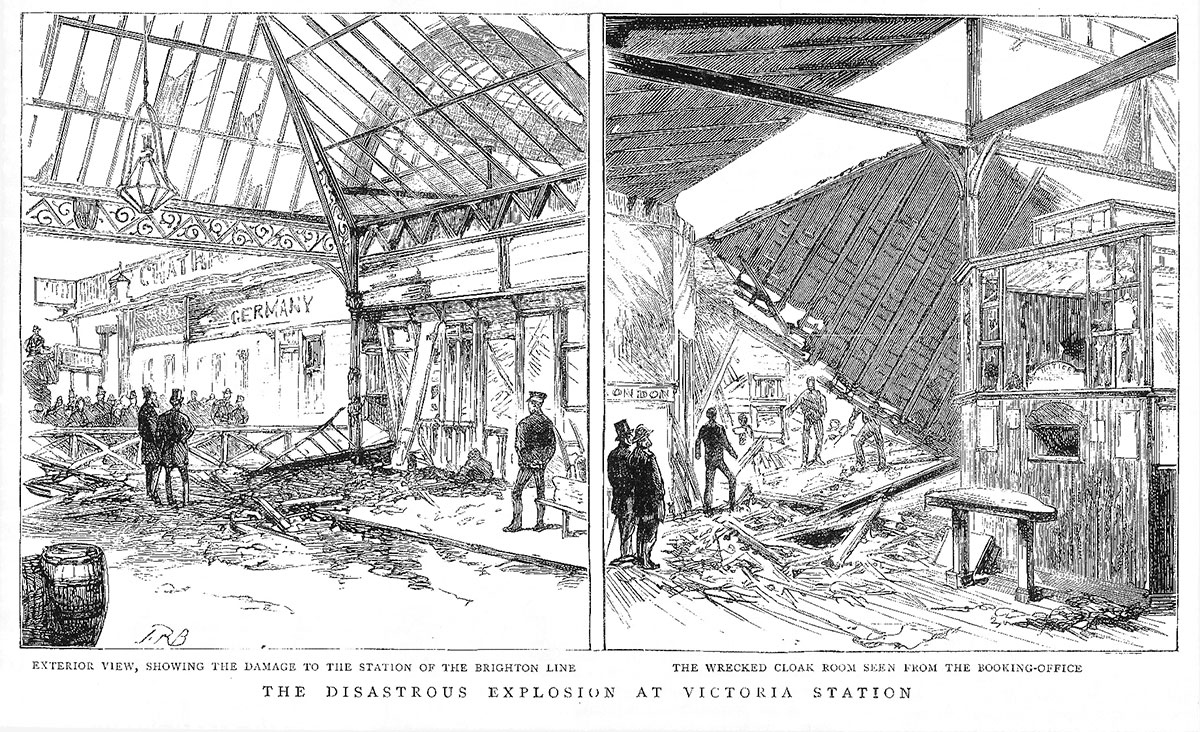Book chapter unearths the bomb hidden in Oscar Wilde's comedy

LAWRENCE – Oscar Wilde is best known today for a pair of writings – the novel “The Picture of Dorian Gray” and the comic play “The Importance of Being Earnest” – and for having been imprisoned (1895-1897) for homosexual activity.
Although he was Irish-born and lived in London during a time when political relations between Ireland and England were extraordinarily fraught, Wilde largely kept his politics to himself. But he did give his audience some hints.
 Now, with the passage of time having stripped “Earnest” of its political context, a University of Kansas professor of English has written a piece reminding modern readers that certain lines in the play clearly allude to an Irish separatist terror attack and that Wilde seems to show some sympathy for the so-called Fenian dynamite campaign.
Now, with the passage of time having stripped “Earnest” of its political context, a University of Kansas professor of English has written a piece reminding modern readers that certain lines in the play clearly allude to an Irish separatist terror attack and that Wilde seems to show some sympathy for the so-called Fenian dynamite campaign.
“Rage’s Brother: The Bomb at the Center of Wilde’s Trivial Comedy” is a chapter in the new book “The Edinburgh Companion to Irish Modernism” (Edinburgh University Press). It’s a continuation of Kathryn Conrad’s focus on the topic. In 2019, the KU Department of English chair co-edited and co-wrote “Science, Technology and Irish Modernism” (Syracuse University Press), and she is writing another book under contract tentatively titled “Technology and the Forms of Irish Modernism.”
While literary modernism is frequently associated with a time period (late 1800s to World War II), the editors of the Edinburgh collection focus on Irish modernism’s resistance to religious, sociopolitical and aesthetic orthodoxies.
“This is about Wilde as a proto-modernist,” Conrad said. “He is thinking about the ways that technologies, aesthetic forms and other kinds of mediating influences affect how we know and operate in the world. The stereotype of Irish writers from the late 19th and early 20th centuries is that they are anti-science or hostile to science, interested primarily in folklore and so forth. It emerges, in part, from William Butler Yeats’ comment that ‘the man of science is too often a person who has exchanged his soul for a formula.’
“But one of the things the last book that I co-edited and contributed to was arguing is that Irish writers were far more interested in questions of science and technology than that sort of superficial understanding of Yeats and the Irish literary renaissance would have us believe. And in fact, even when they were superficially distrustful of scientific and technological innovation, it was for fairly complex reasons, including the impact of imperial dominance on the landscape, society and politics of Ireland.”
In her new book chapter, Conrad noted that when “Earnest” premiered in 1895, Alfred Nobel’s invention of dynamite was still recent (1867), and that his innovation was quickly turned, in the case of the Fenians and others, to terrorism and warfare.
Wilde was associated with the aesthetic movement of his time, which can be summed up as favoring “art for art’s sake” and not as religious or sociopolitical activism. As a result, Conrad said, “People often saw him as sort of frivolous and apolitical. But that's not really fair to him. I see him making a deliberate choice to embrace art as a productive response to the political and social challenges of the times. And he set that against some more violent political movements that he nonetheless sympathized with. I think a lot of people would be surprised to know that he was supportive of the anarchist movement, or that he was supportive of the Fenian movement.”
Conrad pointed out that, as playwright George Bernard Shaw noted, “He was the only literary man in London to sign a petition in support of the anarchists of the Chicago Haymarket riots in 1886.”
He did write an 1891 essay, “The Soul of Man Under Socialism," Conrad said, “so he identified himself as a socialist, and maybe a little bit of an anarchist. A lot of people might think he meant that just in a literary way. And that's true, too. But he was really thinking about how ... art was the way to respond to injustice and systems of oppression. It was more subtle and less violent than the bombs that he refers to.”
In “Rage’s Brother,” Conrad makes the case that the several references to the character Jack Worthing as a foundling in a bag in central London’s Victoria railway station could only have been inspired by the Fenian dynamite attack there on Feb. 26, 1884. Wilde cites the same type of bag as the bombers used in their improvised explosive device and places it in the same location – the cloakroom – as the Fenians did.
These short passages are overlooked nowadays, Conrad said, but they jumped out to her in a recent reading.
“Imagine a four-year bombing campaign in New York City,” Conrad said. “People would know about it, and people living in New York City would recognize the reference, especially if it had happened just a few blocks from where the play was being performed, which is the case here.”
In the play’s second act, Jack Worthing also jokes about his friend Algernon’s fake friend Bunbury being “quite exploded,” a phrase Algernon repeats in the third act and to which his aunt, Lady Bracknell, replies “Exploded! Was he the victim of a revolutionary outrage? I was not aware that Mr. Bunbury was interested in social legislation. If so, he is well punished for his morbidity.”
“Obviously,” Conrad said, “there's a certain comedy being evoked in these allusions to the bombing campaigns, so what is Wilde trying to say? The article suggests that, in a very layered way, he's showing a kind of sympathy to things the Fenians were trying to do — to literally explode the power structure and systems that Wilde would agree were oppressive. He's trying to suggest that the better way to do that is through satire, through art. That that is healthier and, indeed, ultimately more effective.”
Image: “The Disastrous Explosion at Victoria Station” from The Graphic, a weekly illustrated newspaper, March 1, 1884. Credit: Courtesy Kathryn Conrad